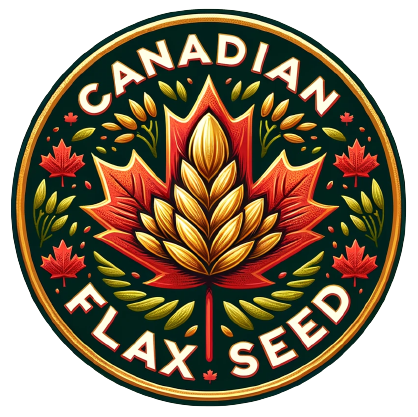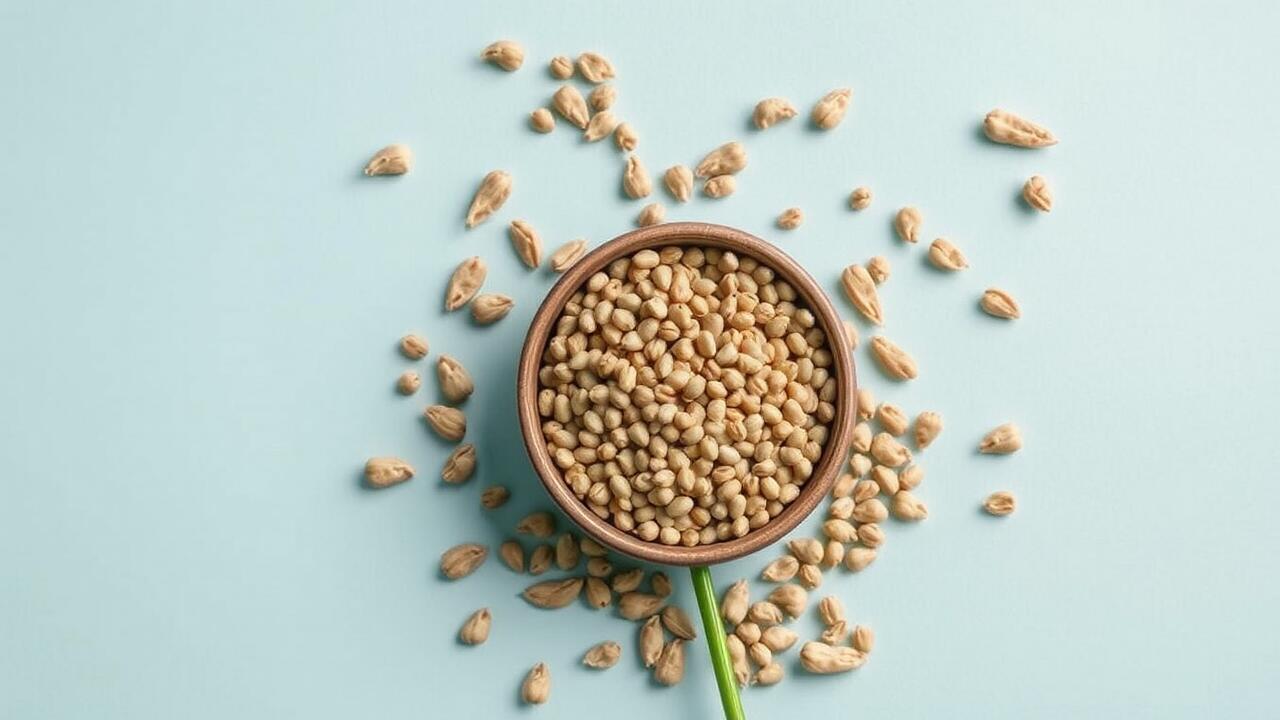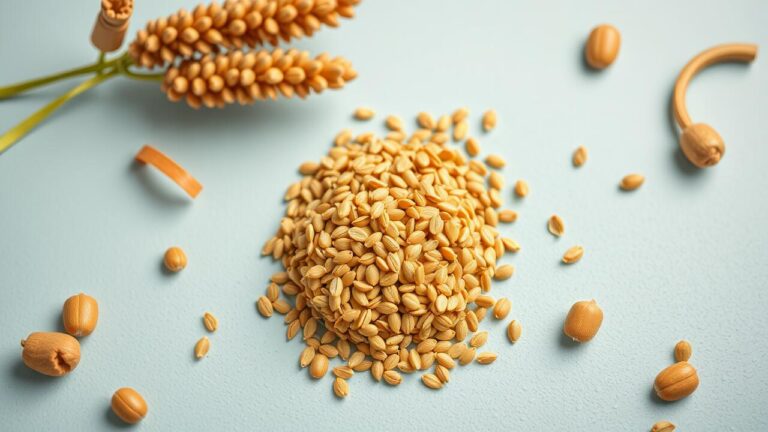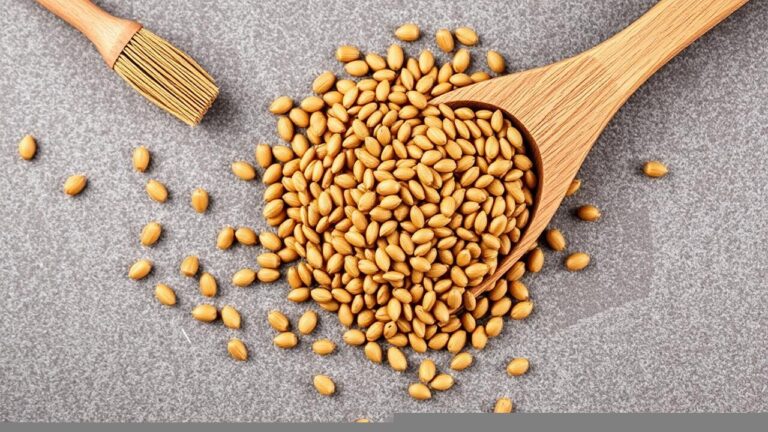The Spread of Flaxseeds: Exploring their Introduction in Canada
Table Of Contents
The Spread Of Flaxseeds: Exploring Their Introduction In Canada | The Spread of Flaxseeds and Their Introduction in Canada: A Comprehensive Exploration
Key Takeaways
- Overview of flaxseeds’ history and their arrival in Canada
- Farming practices and growth of flaxseeds across Canadian regions
- Financial effects of flaxseed farming on local and national economies
- Health advantages associated with the consumption of flaxseeds
- Obstacles faced in the production and cultivation of flaxseeds
The Spread Of Flaxseeds: Exploring Their Introduction In Canada | Historical Background of Flaxseeds
The introduction of flaxseeds, specifically common flax, to Canada has a rich historical background that highlights its significance in various cultures. Indigenous communities utilized wild flax for its versatile properties, employing the fibers for textiles and the seeds for nutritional benefits. As European settlers arrived, they recognized the potential of flaxseed in agriculture and nutrition, leading to increased cultivation. Ground flaxseed became a valuable ingredient in diverse diets, reflecting its essential role in both traditional and contemporary contexts. The Spread of Flaxseeds: Exploring their Introduction in Canada showcases how this remarkable crop transformed into a staple within the region, shaping agricultural practices and food habits alike.
The Spread of Flaxseeds: Exploring their Introduction in Canada | Traditional Uses of Flaxseeds in Indigenous Cultures
Indigenous cultures in Canada have a long-standing relationship with flax, particularly with perennial flax varieties. These communities utilized various parts of the plant for practical purposes. The fibers from the stalks were woven into textiles, mats, and fishing nets, showcasing the plant’s versatility. The seeds themselves were valued not only for their nutritional benefits but also for their potential medicinal properties. This traditional knowledge contributed to the spread of flaxseeds across the regions of Western Canada, paving the way for future agricultural practices.
Throughout history, the use of pale flax among Indigenous peoples has been significant. The flax family, with its deep-rooted cultural relevance, was instrumental in daily life and survival. The preparation of flaxseed oil or meal exemplified its utility, serving as food and a source of sustenance. As settlers arrived and began to recognize the value of flax, the integration of these traditional uses into broader agricultural practices signified an important chapter in The Spread of Flaxseeds: Exploring their Introduction in Canada.
- Indigenous peoples used flax for clothing, ropes, and other textiles.
- Flaxseeds were commonly ground into meal or pressed for oil.
- The plant provided essential nutrients, making it a staple in traditional diets.
- Flax fibers were harvested for building tools and fishing equipment.
- Knowledge of flax cultivation was shared between Indigenous groups and settlers.
- Flax played a role in local economies, contributing to trade among communities.
- The adaptation of flax farming has influenced modern agricultural practices in Canada.
Early European Influence on Flax Cultivation
European settlers played a pivotal role in the introduction of flax to North America, particularly in Canada. As part of their agricultural practices, they recognized the value of flax (linum usitatissimum) not only for its seeds but also for its fibers. The Spread of Flaxseeds: Exploring their Introduction in Canada showcases how these settlers cultivated flax seeds extensively, particularly in the fertile regions of the Canadian prairies. This led to the establishment of flax as a significant crop, providing both nutritional benefits and raw materials for textile production.
By the late 19th century, the thriving demand for flax fibers further spurred cultivation efforts across Canada. Canadian farmers adopted advanced agricultural techniques, enhancing their yields and contributing to the burgeoning flax industry. The Spread of Flaxseeds: Exploring their Introduction in Canada reflects how these early European influences laid the groundwork for today’s flax seed production and positioned Canada as a key player in the global flax market.
The Cultivation of Flaxseeds in Canada
Flaxseeds have a rich history in Canada that intertwines with the traditional uses of Indigenous cultures and the early influence of European settlers. The initial introduction of flax in Canada aligned with the industry’s growth, particularly in the provinces of Alberta, where favorable conditions complement its cultivation. The government of Canada has recognized the economic potential of linseed and linseed oil, supporting research and development aimed at enhancing yield and quality. As part of the diverse flora of North America, flax cultivation not only contributes to the agricultural landscape but also underscores the importance of sustainable practices in contemporary farming. The Spread of Flaxseeds: Exploring their Introduction in Canada highlights both the historical significance and the current advancements in crop cultivation across the country.
Regions in Canada Suitable for Flax Farming
Canada’s vast agricultural landscape provides several regions that are particularly conducive to flax farming. The prairies, with their rich soil and suitable climate, have become a prime area for the cultivation of this versatile plant. The spread of flaxseeds: exploring their introduction in Canada highlights how this species flourished in these settings. Moreover, farmers benefit from the well-drained loamy soils that support the growth of flax, allowing the striking blue flowers of wildflowers to bloom.
Certain provinces, such as Saskatchewan and Manitoba, dominate flax production due to their favorable conditions. These areas experience a growing season that aligns well with flax’s growth requirements. The spread of flaxseeds: exploring their introduction in Canada underscores the adaptability of this crop to various Canadian climates. By understanding which regions provide the optimal environment, growers can maximize yields and contribute to the ongoing success of flax farming across the country.
Best Practices for Growing Flaxseeds
Growing high-quality flaxseeds requires a careful selection of soil and climate conditions. The optimal environment is characterized by well-drained, fertile soils with a pH level between 6.0 and 7.0. Farmers in Canada are encouraged to adopt crop rotation practices, which enhance soil health and reduce pest populations. Efficient water management is also essential since cultivated flax is sensitive to both drought and excessive moisture. These strategies play a crucial role in ensuring a successful yield within the Canadian flaxseed industry.
Proper timing for planting and harvesting is key to maximizing output. Planting should occur in late spring when soil temperatures reach around 50°F. This allows the crop to thrive through the warm summer months. Regular monitoring for pests and diseases can help maintain the health of the crop. Implementing integrated pest management techniques further protects against potential threats. These best practices contribute to ensuring the continued success of the Canadian flax seeds market, supporting the legacy of traditional flax cultivation in Canada.
Economic Impact of Flaxseed Production
The proliferation of flax cultivation in Canada has significantly shaped the country’s agricultural landscape, providing a variety of economic benefits. Ground flaxseed supplies have increased due to the rising demand for healthy flax products, which boosts local economies and supports farmers. Historical insights from The Spread of Flaxseeds: Exploring their Introduction in Canada reveal that indigenous cultures utilized flax for various purposes, laying the groundwork for its modern economic importance. As the market for health-oriented ingredients grows, the facts about flax become clearer, emphasizing its role in both nutrition and the economy. Investment in flax cultivation not only enhances agricultural diversity but also creates job opportunities across multiple sectors related to flax products.
- Increased local revenue for farmers and agricultural businesses
- Job creation in farming, processing, and distribution sectors
- Support for sustainable agricultural practices
- Enhancement of a diverse range of flax-based products in the market
- Greater opportunities for exports, boosting the national economy
- Promotion of research and development in health-oriented food products
- Strengthening community engagement and collaboration through agricultural initiatives
Flaxseed Market Trends in Canada
The demand for flaxseeds in Canada has seen a notable increase, reflecting a growing awareness of their nutritional benefits and versatility. The Spread of Flaxseeds: Exploring their Introduction in Canada highlights how different varieties, such as pale flax, have been cultivated to meet market needs. The production of flax plants has expanded, with more farmers recognizing the profitability associated with harvested flax. This trend is supported by various research studies and the availability of resources, including a flaxseed download citation, which provides valuable information for growers.
Market dynamics for flax production are further influenced by health trends favoring plant-based foods and sustainable agriculture practices. With the increasing popularity of flax plants as a source of omega-3 fatty acids, the industry is witnessing an upsurge in investment and innovation. The Spread of Flaxseeds: Exploring their Introduction in Canada serves as a testament to the historical significance and current relevance of flax production, positioning Canada as a key player in global markets. As consumer preferences shift, the future of flax production looks promising, paving the way for enhanced economic opportunities within the sector.
Employment Opportunities in the Flax Industry
The introduction of flaxseeds in Canada has led to numerous employment opportunities within the growing flax seed industry. As the interest in flax start continues to rise, jobs related to the cultivation and processing of flax fibres and flax straw have also increased. Canadian farmers are diversifying their crops, incorporating various flax landraces to meet market demands. This shift not only enhances economic stability in rural communities but also fosters job creation in areas such as farming, transportation, and processing.
The Spread of Flaxseeds: Exploring their Introduction in Canada has stimulated a robust supply chain that requires skilled labor at various stages. Positions in research, agronomy, and marketing have emerged as the industry expands. Companies are looking for professionals who understand sustainable farming practices and can navigate the complexities of the flax seed industry. With the integration of modern technologies and traditional farming methods, the potential for job growth remains significant, promising new ventures and collaborations in this evolving sector.
Nutritional Benefits of Flaxseeds
Flaxseeds, a key product of the beautifully-blue blooming flax plant, offer numerous nutritional benefits that contribute to their rising popularity. As we embark on this flax-tastic voyage, we discover that these tiny seeds are packed with omega-3 fatty acids, fiber, and essential nutrients, making them a powerhouse for health enthusiasts. The introduction of flaxseeds in Canada, highlighted in The Spread of Flaxseeds: Exploring their Introduction in Canada, has allowed for increased cultivation and innovation in flax seed production. Beyond their culinary uses, flax fiber derived from the blue flax plant enhances both textiles and sustainable practices, demonstrating the multifaceted benefits of this ancient crop.
| Nutritional Component | Amount per 100g | Health Benefits |
|---|---|---|
| Omega-3 Fatty Acids | 22.8g | Supports heart health and reduces inflammation |
| Dietary Fiber | 27.3g | Aids digestion and promotes bowel regularity |
| Protein | 18.3g | Assists in muscle building and repair |
| Lignans | 0.3g | May help balance hormones and reduce cancer risk |
| Magnesium | 392mg | Supports bone health and energy production |
Health Properties and Their Importance
Flaxseeds have gained recognition for their impressive health properties, making them a favored choice among Canadian farmers. The Spread of Flaxseeds: Exploring their Introduction in Canada showcases how these seeds have become integral to healthy diets across western countries. Rich in omega-3 fatty acids, fiber, and lignans, flaxseeds contribute to heart health and digestive wellness. Alberta has emerged as a key region for flax cultivation, benefiting from favorable growing conditions that enhance the seeds’ nutritional profile.
The importance of flaxseed in the Canadian diet is supported by rigorous standards set by the Canadian food inspection authorities. These measures ensure that the flaxseeds, such as those derived from Lewis flax varieties, maintain their high quality and nutritional value. As more consumers seek natural food sources, the demand for flaxseeds continues to rise, reflecting their role in promoting health and wellness within the natural world. This shift emphasizes the need for sustainable practices in flax production to meet growing consumer interest.
Comparison with Other Seed Sources
Flaxseeds offer unique benefits that set them apart from other seed sources. Historically, The Spread of Flaxseeds: Exploring their Introduction in Canada highlights how this native wildflower cultivated in provinces like Alberta, Saskatchewan, and Manitoba became a staple in traditional diets. Unlike many other seeds, flaxseeds are rich in omega-3 fatty acids and fiber, contributing significantly to heart health and digestive wellness.
The versatility of flaxseeds is evident when compared to other seeds such as chia or sunflower seeds. While these alternatives also boast nutritional advantages, flaxseeds stand out for their high lignan content, which has antioxidant properties. As The Spread of Flaxseeds: Exploring their Introduction in Canada reveals, the cultivation and use of flaxseeds have expanded, making them a sought-after crop in Canada’s agricultural landscape.
Challenges in Flaxseed Production
The cultivation of flaxseeds, particularly the varieties usitatissimum and angustifolium, has faced various challenges impacting production levels across different areas in Canada. Over the years, fluctuating climate conditions have posed significant threats to yield and quality. The Spread of Flaxseeds: Exploring their Introduction in Canada highlights how weather extremes and pests can disrupt farming practices. Understanding these challenges is essential for improving agricultural strategies and ensuring the sustainability of flaxseed production in the region.
Environmental Factors Affecting Yield
Temperature fluctuations significantly impact the yield of flaxseeds. Common flax thrives in moderate climates, where the temperature ranges between 60 to 70 degrees Fahrenheit. Extreme heat or prolonged cold can hinder growth, leading to reduced seed production. The Spread of Flaxseeds: Exploring their Introduction in Canada highlighted the adaptability of wild flax, but environmental extremes can still challenge even the most resilient strains of flaxen plants.
Soil quality plays a crucial role in the production of flaxseed. Well-drained, loamy soils rich in organic matter enhance seed development and nutrient absorption. Poor soil conditions can lead to stunted growth and lower yields. The Spread of Flaxseeds: Exploring their Introduction in Canada demonstrates the importance of proper agronomic practices to improve soil health, ultimately ensuring robust production of ground flaxseed.
Conclusion
The Spread of Flaxseeds: Exploring their Introduction in Canada highlights the deep-rooted connections between indigenous cultures and the cultivation of flax, particularly linseed. The industry in Canada has benefitted from the rich flora of North America, allowing provinces such as Alberta to thrive in flax farming. The government of Canada has recognized the significance of linseed oil not only for its economic potential but also for its nutritional benefits. As the demand for flaxseeds continues to grow, understanding their historical context and traditional uses becomes essential in appreciating their role in Canadian agriculture.
FAQS
What impact do flaxseeds have on the agriculture industry in Canada, and what are some facts about flax that are important to know?
Flaxseeds play a significant role in the agriculture industry in Canada due to their nutritional benefits and versatility. Flaxseed contains essential fatty acids and dietary fiber that are beneficial to health. Additionally, numerous facts about flax reveal that it can thrive in various climates and soils, making it a resilient crop. Interestingly, myths and misconceptions about flax also exist, proving that while the benefits of flaxlies in its nutritional value, the overall impact of the flax industry and the spreads derived from it is profound and far-reaching.
What are some interesting facts about flax and its influence on the agriculture industry in Canada?
Flax has a significant influence on the agriculture industry in Canada, contributing to both crop diversity and export opportunities. Some interesting facts about flax include its rich omega-3 fatty acid content and its use in various health products. However, despite some misconceptions and myths—often referred to as “flax lies”—the truth is that flax is a sustainable crop well-suited for Canadian climates, making it an integral part of the agricultural landscape.
How has the introduction of flaxseeds influenced the farming practices within the agriculture industry in Canada, and what are some essential facts about flax?
The introduction of flaxseeds has significantly impacted the agriculture industry in Canada by promoting sustainable farming practices and crop rotation. Some important facts about flax include its high omega-3 fatty acid content, its use in both food and industrial applications, and its ability to improve soil health. Understanding these facts about flax can help farmers optimize their production and contribute to the industry’s growth in Canada.
What are some lesser-known facts about the role of flax in the agriculture industry in Canada?
Flax has become a significant crop in the agriculture industry in Canada, contributing to both crop diversity and soil health. Some interesting facts about flax include its high omega-3 fatty acid content and its use in eco-friendly products. Additionally, the introduction of flax has led to the development of new markets and has provided farmers with additional income opportunities within the Canadian agriculture industry.
What are some significant facts regarding the role of flax in the agriculture industry in Canada?
Flax plays an important role in the agriculture industry in Canada, with numerous facts highlighting its contributions. For instance, Canada is one of the leading producers of flax, and the cultivation of flax contributes to sustainable farming practices. Additionally, the use of flax can improve soil health and provide crop diversity, making it a vital crop in the Canadian agricultural landscape.
What are some significant facts about flax that highlight its importance within the agriculture industry in Canada?
Flax is a vital crop in the agriculture industry in Canada, known for its high nutritional value and versatility. Some key facts about flax include its ability to improve soil health, support sustainable farming practices, and serve as an essential source of omega-3 fatty acids, which enhances its popularity among health-conscious consumers. Additionally, flax plays a crucial role in crop rotation, providing benefits such as pest management.
How has the cultivation of flax in Canada contributed to the industry’s growth, and what are some key facts about flax?
The cultivation of flax in Canada has significantly contributed to the industry by diversifying crop production and enhancing soil health. Key facts about flax include its high content of omega-3 fatty acids, its versatility in use for food and textiles, and its capacity to thrive in Canadian climates, making it a valuable asset to the agriculture industry in Canada.
What are the economic contributions of flax to the agriculture industry in Canada and what key facts about flax should be noted?
The cultivation of flax significantly contributes to the agriculture industry in Canada through increased crop diversity and sustainable farming practices. Some key facts about flax include its rich omega-3 fatty acid content, its use as a rotational crop to improve soil health, and its role in the growth of the organic farming sector within the industry in Canada.
How do flaxseeds contribute to the agricultural industry in Canada, and what important facts about flax should farmers consider?
Flaxseeds play a vital role in the agriculture industry in Canada by providing farmers with a versatile crop that can enhance soil health and diversify their production. Important facts about flax include its high omega-3 fatty acid content, its suitability for rotational farming, and its demand in both food and industrial applications. Understanding these facts about flax can aid farmers in making informed decisions that benefit both their operations and the wider agriculture industry in Canada.
How do the characteristics of flax contribute to its popularity in the agriculture industry in Canada?
The characteristics of flax, such as its adaptability to various climates and low input requirements, play a significant role in its rise within the agriculture industry in Canada. Additionally, there are various facts about flax, including its multifaceted uses for oil and fiber, which enhance its popularity among farmers and contribute to its economic importance in the industry in Canada.







